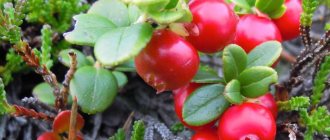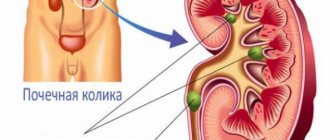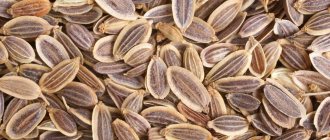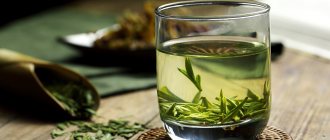Sometimes they ask us: “Why is my urine dark and with bubbles after brewing lingonberry leaves?”
Because you need to know how to brew leaves, maintain the correct proportions and have an idea of contraindications.
There are many different methods, both general strengthening and targeted.
Here are basic instructions for using lingonberry leaf , which is suitable for strengthening the body , treating colds, viruses, and cardiovascular diseases:
Place 2 large spoons of leaves in a jar, add 200 mg of water and place in a saucepan with a water bath. Place on low heat for 30 minutes. Then cool and filter and add water to get a volume of 200 mg. Doctors recommend drinking 1/3 glass before each meal.
Healing composition of leaves
The composition of useful components in lingonberry fox is striking in its variety of unique substances. The leaves of the evergreen lingonberry bush contain:
- ascorbic acid or vitamin C;
- routine;
- B vitamins;
- organic acids (tartaric, gallic, quinic, ursolic, ellagic);
- arbutin (natural antiseptic) in an amount of 9%;
- vaccinin (antiseptic);
- hydroquinone;
- methylarbutin (diuretic);
- tannins in amounts from 5 to 30%;
- coumarins (vasodilator effect);
- macro- and microelements (rich in manganese, magnesium, potassium, selenium and zinc).
Due to the presence of the natural antiseptic glycoside arbutin, the leaves are widely used to treat kidney diseases. This phytoncide is capable of suppressing the growth of even Staphylococcus aureus. Organic acids (tartaric and quinic) contribute to the diuretic effect. Ursolic acid and high tannin content have an astringent and demineralizing effect, improving the effect of antibiotics in complex therapy. Vitamin C, rutin, microelements help strengthen blood vessels and capillaries, establishing normal blood supply to organs and tissues. The active components of the leaves help regulate nitrogen metabolism and remove toxins from the body. Thus, lingonberry leaves have a diuretic, antibacterial, antispasmodic, anti-inflammatory, and vascular strengthening effect.
Lingonberry leaves for inflammatory kidney diseases
Pathologies and infectious diseases of the kidneys are one of the main areas of use of this healing agent. The diuretic and antiseptic effect perfectly helps relieve swelling and extinguish inflammation in nephritis and pyelonephritis. When lingonberry glycosides enter the body, they turn into hydroquinone, which irritates the kidney parenchyma, causing the release of fluid. Pathogenic organisms are removed by being washed out of the kidney structure. Vaccinin and arbutin complement the antimicrobial effect with a positive effect. It has been proven that relief from the acute period of pyelonephritis occurs faster when drinking drinks made from lingonberry leaves. Moreover, the beneficial effect on the vascular system and the mild antispasmodic effect help reduce unpleasant symptoms and difficulties in excreting urine. The recovery period for patients is shortened. Deintoxication of the body takes place in a faster time, significantly improving the general well-being of patients and facilitating the healing of inflammatory foci. The use of infusions and decoctions helps to avoid exacerbations of chronic nephritis and pyelonephritis.
Phytotherapeutic properties of the plant
Lingonberry fruits are bright red or burgundy berries that ripen in the fall. Both the fruits themselves and the leaves of the plant have a therapeutic effect.
As for the fruits, they are rich in:
- Fresh berries are a treasure trove of vitamin C, known to everyone for its medicinal properties. In dried form, the fruits are used mainly for preparing fruit drinks and decoctions; unfortunately, the amount of vitamin C is not so significant in this form.
- Also, fresh and dried fruits contain vitamins B and A.
- Minerals and salts are so necessary for the normal functioning of the body.
- They can boast of the presence of pectin and tannins.
All these elements make the berry very necessary and healthy.
Lingonberry leaves for urolithiasis are simply an irreplaceable medicine. After all, the constituent leaves have the following effect:
- diuretic;
- tonic;
- sedative;
- antiseptic;
- cardiotonic;
- wound healing;
- anti-inflammatory.
It has been experimentally proven that the shoots of the plant have anticancer, antihistamine, and antiviral effects. Preparations based on leaves and fruits have a general strengthening effect on the body as a whole. It is imperative to include lingonberries in the diet of people suffering from pancreatic diseases.
You can buy lingonberry leaves from us
Lingonberry leaves for urolithiasis
It is believed that drinks based on lingonberry leaves help soften kidney stones and remove them from the body. Indeed, the vasodilating and diuretic effect is expressed when taking decoctions from the leaves of the bush. But with this disease, uncontrolled displacement of large stones can cause serious health problems, blockage of ducts and even a threat to life. Therefore, treatment with lingonberries can only be recommended by a doctor who knows the individual picture of the patient’s illness and the risks. In cases where the problem of oxalate deposits in the kidneys begins to occur, it is recommended to use a decoction of the leaves to prevent the formation of kidney stones. Low acidity is characteristic of this disease. Organic acids (tartaric, gallic, ursolic) help normalize metabolism and slow down the processes of oxalate deposition.
Basically, lingonberry drinks are used for the prevention and removal of small mineral particles, relieving pain and inflammation. The diuretic effect of drinks normalizes acidity, washes out harmful microorganisms, toxins, and small deposits of minerals, thus cleansing the kidneys of harmful components.
Eating berries
It is also useful to use lingonberries. They, like the leaves, have an antimicrobial effect on the body; they can be used for many pathologies of the urinary organs. Berries and leaves have a diuretic effect.
For pyelonephritis, it is useful to take lingonberry juice. Add a spoonful of honey to 100 g of fresh juice and mix. Used as a drink three times a day. For kidney stones, lingonberry juice helps remove stones from the urinary canals.
Lingonberry is a very healthy berry for the kidneys and liver. Therefore, in areas where it grows and is consumed, people are less likely to suffer from urolithiasis and have almost no problems with urine excretion.
A common way to treat kidney stones with lingonberries is to use the berries. To prepare the medicine, 150 g of lingonberries are poured with two liters of warm water, left for 3 hours, and then half a glass of vodka is poured into the infused mixture.
Then the liquid is heated for a third of an hour in a water bath and cooled. Take a glass of the decoction half an hour before meals.
To prepare fruit juice, use berries sorted and crushed with a blender or juicer, and filter the resulting juice through cheesecloth.
You need to take 50 g of the resulting juice, add 2/3 cup of boiled water and a little honey to taste. The mixture needs to be stirred. Morse is ready.
Drink 0.5 glasses before each meal. This method of treatment cannot be used for children under 12 years of age. Such drinking is also prohibited in case of renal failure. But this fruit drink is indispensable for cystitis.
For some diseases, it is useful to drink sea water. It is prepared simply: 200 g of lingonberries are placed on a sieve, doused with boiling water, then transferred to a container and filled with two glasses of water. They insist for a quarter of a day. Drink six spoons before each meal.
But you can’t eat berries all the time, you need to take a break.
Lingonberry leaf for kidney failure
The manifestation of renal failure is a very serious disorder and may already be a consequence of the neglect of another disease. Intensifying the diuretic effect in this case can aggravate the symptoms, increasing the load on the kidneys. Therefore, renal failure is a contraindication for the use of lingonberry leaves in the treatment. The medicinal properties of the plant are used to prevent such complications in the treatment of other diseases and after consultation with a doctor.
Beneficial properties of lingonberries in the treatment of kidneys
According to statistics, people are increasingly paying attention to effective folk recipes and other traditional medicine, considering them safe. Although the safety here is relative, since herbal preparations still need to be used correctly and their beneficial properties must be known.
For example, lingonberries are successfully used for pyelonephritis. This plant has diuretic and choleretic properties, has an antibacterial effect on organs, since its leaves and berries contain vitamin C and other beneficial substances.
Lingonberry is useful in the treatment of urolithiasis, cystitis and pyelonephritis. It is recommended for kidney disease during pregnancy, rheumatism and myopia. Even berry jam has a good effect on the kidneys.
Here is one recipe for preparing a healing infusion that helps with kidney pathologies. Take 20 g of lingonberry leaves and berries and pour in a glass of hot water. Heat the mixture over low heat without bringing it to a boil, close the vessel with a lid and leave for an hour.
The strained infusion is taken one tablespoon each time before main meals. This recipe is used not only for acute pyelonephritis. But when deciding to treat a disease with lingonberries, it is better to discuss all the details with your doctor.
Recipes from lingonberry leaves for home use
Infusions, decoctions, and lingonberry tea are used for medicinal purposes. It is easy to prepare these drinks at home, using dried and crushed leaves of the bush, prepared in advance or purchased at the pharmacy:
- Preparing the infusion. About 10 grams of crushed raw materials, which corresponds to two tablespoons, are poured with a glass of water and left in a water bath for 30 minutes, with the lid closed. Afterwards, the solution is filtered and the remaining leaves are squeezed out. The resulting infusion is diluted with another glass of water and 1/3 glass is consumed. The course of use is usually 2 weeks.
- Preparation of infusion without a water bath. A tablespoon of lingonberry leaf is poured into a glass of boiling water, covered and left for 3 hours. Then filter and consume, dividing the resulting infusion into 3 doses. Convenient to prepare a fresh drink every day.
- Preparation of the decoction. The raw material in the amount of 2 tablespoons is poured into 500 ml of water and placed on the fire until it boils. Boil the mixture over low heat for 10 minutes, then leave for another hour. Take 1/3 cup 3-4 times a day, the last dose should be 3-4 hours before bedtime. The appointment may last 2-4 weeks.
- Tea is prepared in the usual way. 1-2 filter bags or 1-2 teaspoons are poured into 200 ml of boiling water and allowed to brew for 30 minutes. lemon or honey is added for taste.
Making tea
Pour one teaspoon of leaf into a glass, pour boiling water and brew for half an hour. It is advisable not to forget to drink regularly before sitting down at the table. After using it for a week, we take a break for a month.
The body is saturated with all the necessary vitamins that are contained in lingonberry leaves and the benefits of such tea are undeniable.
But it can still be increased if you add fireweed, rose hips, hibiscus petals, dried rowan, and mint. The more ingredients, the richer the bouquet.
And fireweed will lower the ORP of the water, which will make the tea softer and easier for the body to absorb. You can drink this tea constantly, without monthly breaks.
Patient reviews on the use of lingonberry leaves
"Greetings to all! I would like to share my impressions of using lingonberry leaves to prevent exacerbations of pyelonephritis. I am 35 years old. At the age of 28, I developed a severe cold in my kidneys and was diagnosed with pyelonephritis. Back pain, fever, it only became easier when lying down. She was treated with antibiotics. Since then, in the autumn-winter period, getting wet feet or hypothermia provoked pain in the kidney area. Over the course of several years, I introduced the habit of drinking lingonberry tea during the cold season in courses of 14 days tea/14 days break for 3 months. There have been no exacerbations for a very long time. I think that this is the effect of the lingonberry leaf, since I do not use any other means. I’ve already gotten used to the bitter taste, sometimes I add lemon, it becomes like green tea.”
"Good day. My name is Nina, 62 years old. When visiting a doctor, tests revealed a tendency to deposit salts in the joints and sand in the kidneys according to ultrasound. The urologist prescribed drinking a decoction of lingonberry leaves for prevention. I have been using the decoction and infusions for several years, and there are no kidney stones yet. I feel good after the course of treatment, there is less pain, it helps with swelling, you can feel it right away.”
TAGS: kidneys
WE RECOMMEND:
- Buy lingonberry leaf
- Lingonberry leaf for children Lingonberry leaf is absolutely safe, so it is often used to treat diarrhea in children. In the article we will talk about its benefits, ways...
Collection and preparation
Lingonberry bushes grow only in the northern regions. Therefore, you can meet them in the tundra, taiga or swamps. It no longer occurs in temperate climates.
It’s not at all difficult to prepare berries for fruit drinks and juice. They are sorted, washed and dried. The berries are collected during the period of their full ripening, because, once picked from the branches, they will not be able to ripen. The time of collection of raw materials is also important.
They are collected in the morning or evening in warm weather. Store fresh dried berries in a room with low humidity and little lighting. For buds, lingonberry berries are also prepared in the form of compotes, jam or fruit drink.
It should be remembered that when picking berries, they need to be protected from the sun. They don't like his rays.
If leaves are prepared, they must be collected twice a year, in spring and autumn, when the substances needed for preparing potions are most active.
The collected leaves are dried in a well-ventilated area, out of direct sunlight.
Those who live in the southern regions and do not have the opportunity to collect fresh raw materials can easily buy plant leaves at a pharmacy.








